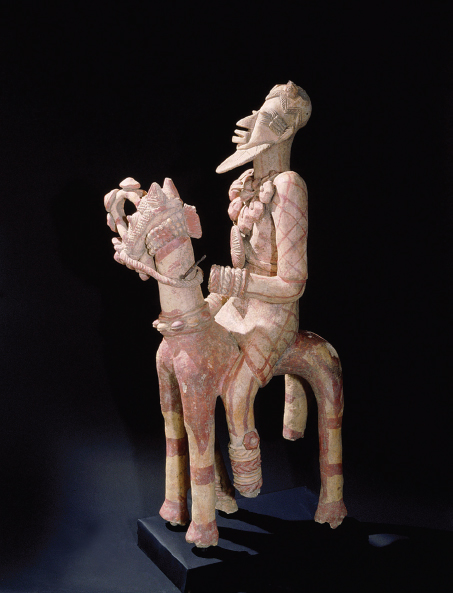Trans-Saharan and Coastal Trade

For centuries, the primary avenue of trade for West Africans passed through the Ghana, Mali, and Songhai empires, whose power was based on the monopoly they enjoyed over the trans-Saharan trade. Their caravans carried West African goods — including gold, copper, salt, and slaves — from the south to the north across the Sahara, then returned with textiles and other foreign goods. For the smaller states clustered along the West African coast, merchandise originating in the world beyond the Sahara was scarce and expensive, while markets for their own products were limited.
Beginning in the mid-fifteenth century, a newly opening coastal trade with Europeans offered many West African peoples a welcome alternative. As European sailors made their way along the coast of West and then Central Africa, they encountered a bewilderingly complicated political landscape. Around the mouths of the Senegal and Gambia rivers, numerous Mande-speaking states controlled access to the trade routes into the interior. Proceeding farther along the coast, they encountered the Akan states, a region of several dozen independent but culturally linked peoples. The Akan states had goldfields of their own, and this region soon became known to Europeans as the Gold Coast. East of the Akan states lay the Bight of Benin, which became an early center of the slave trade and thus came to be called the Slave Coast. Bending south, fifteenth-century sailors encountered the Kingdom of Kongo in Central Africa, the largest state on the Atlantic seaboard, with a coastline that ran for some 250 miles. It was here in 1578 that Duarte Lopez visited the capital city of more than 100,000 residents. Wherever they went ashore along this route, European traders had to negotiate contacts on local terms (Thinking Like a Historian).
PLACE EVENTS IN CONTEXT